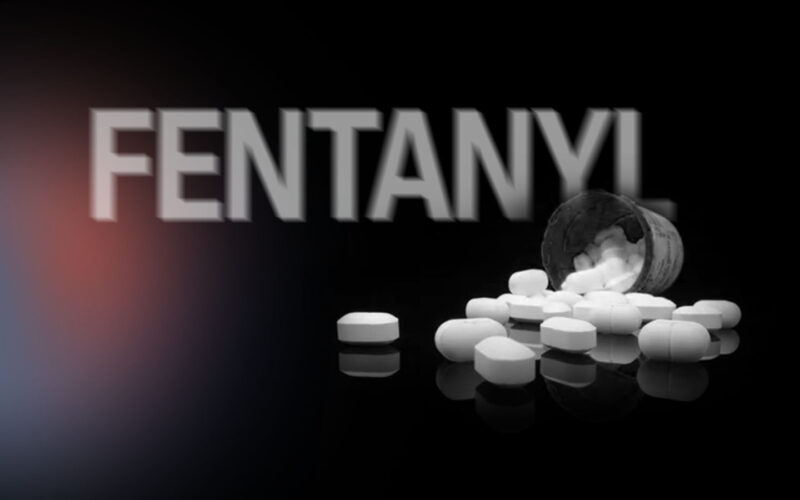Fentanyl is a powerful synthetic opioid that has gained attention due to its potency and role in the ongoing opioid crisis.
This drug, originally developed for pain management in medical settings, has become a significant public health concern due to its increasing presence in illicit drug markets.
Fentanyl’s extreme potency makes it up to 50 times stronger than heroin and 100 times stronger than morphine.
This article will explore 15 facts about fentanyl that highlight its dangers and impact on society.
Understanding these facts is crucial for raising awareness and promoting safety in communities affected by this powerful substance.
1. Highly Addictive
Fentanyl is extremely addictive. Its potency makes it 50 times stronger than heroin. This means even small amounts can lead to dependency.
Users often develop a tolerance quickly. They need more of the drug to get the same effect. This rapid tolerance buildup increases the risk of addiction.
Fentanyl affects the brain’s reward system intensely. It floods the brain with dopamine, creating a powerful high. This intense pleasure reinforces drug-seeking behavior.
The drug’s fast-acting nature contributes to its addictiveness. Effects are felt quickly, but they also wear off rapidly. This can lead to frequent use and increased cravings.
Physical dependence on fentanyl can develop in a short time. Users may experience severe withdrawal symptoms when they stop using. This makes it hard to quit without help.
The risk of addiction is higher because fentanyl is often mixed with other drugs. Users may become addicted without realizing they’re taking fentanyl.
2. Overdose Potential
Fentanyl has an extremely high overdose potential. It is 50 to 100 times more potent than morphine, making even small doses potentially lethal.
The drug’s potency means users can easily take too much without realizing it. Even amounts as small as a few grains of salt can be fatal.
Fentanyl’s overdose risk is heightened by its presence in other drugs. Dealers often mix it into heroin, cocaine, or counterfeit pills without users’ knowledge.
Synthetic opioids like fentanyl contribute to nearly 70% of overdose deaths. This statistic underscores the drug’s deadly impact on public health.
Fentanyl overdoses can happen quickly and unexpectedly. Users may not realize they’ve taken the drug until it’s too late.
Recognizing overdose symptoms is crucial. These can include shallow breathing, pinpoint pupils, and loss of consciousness. Immediate medical attention is essential for survival.
The widespread availability of fentanyl has led to a surge in overdose deaths. Its potency and prevalence make it a major threat to public safety.
3. Respiratory Depression
Fentanyl can cause severe respiratory depression. This means it slows down breathing, which can be very dangerous.
The drug affects the brain’s respiratory center. It makes the body less sensitive to carbon dioxide levels in the blood. This leads to slower and shallower breathing.
Fentanyl’s effects on breathing happen quickly. Studies show it can depress respiration within 10-15 minutes after taking the drug.
The risk of respiratory depression is higher with fentanyl than with other opioids. It’s about 100 times stronger than morphine.
People who take fentanyl may stop breathing completely. This can cause brain damage or death if not treated fast.
Certain factors increase the risk. These include taking high doses, mixing with other drugs, or having lung problems.
Doctors can reverse fentanyl-induced respiratory depression with drugs like naloxone. But quick action is crucial.
Genetic factors may also play a role. Some people might be more likely to experience respiratory depression from fentanyl due to their genes.
4. Synthetic Opioid
Fentanyl belongs to a class of drugs called synthetic opioids. Unlike natural opioids from poppy plants, synthetic opioids are made in labs.
These lab-created substances act on the same brain targets as natural opioids. They produce similar pain-relieving effects as morphine or codeine.
Fentanyl is extremely potent. It’s up to 50 times stronger than heroin and 100 times stronger than morphine.
Other synthetic opioids exist, too. These include drugs like methadone and tramadol. Each has different strengths and uses.
The strength of synthetic opioids makes them risky. Even small amounts can cause overdoses. This is why fentanyl has become a major health concern.
Synthetic opioids are now a leading cause of drug deaths. They play a role in nearly 70% of overdose deaths in the United States.
5. Illegal Production
Illicit fentanyl manufacturing is a growing problem. Most illegal fentanyl comes from clandestine labs, not diverted medical supplies.
These labs often operate in Mexico and China. They use chemical precursors to synthesize fentanyl illegally. The process is dangerous and unregulated.
Illicit producers frequently mix fentanyl with other drugs. This increases profits but raises overdose risks. Users may not know fentanyl is present.
Drug cartels and criminal organizations control much of the production. They distribute fentanyl widely across borders.
The DEA is working to stop illegal fentanyl production. They recently added key chemical precursors to a special watch list.
Fentanyl’s potency makes small-scale production possible. This creates challenges for law enforcement trying to locate labs.
Illegal producers often make counterfeit pills. These look like prescription opioids but contain fentanyl. The fake pills are very hard to identify.
6. Deaths Increased
Fentanyl-related deaths have risen sharply in recent years. The drug has become a major factor in the ongoing opioid crisis.
In 2022, 73,654 people died from fentanyl overdoses in the United States. This number is more than double the deaths recorded just three years earlier in 2019.
The increase in fentanyl deaths has been steady over the past decade. Each year has seen a rise in fatalities linked to this potent synthetic opioid.
While the growth rate of fentanyl deaths slowed in 2022, it still marked an increase. The year-over-year growth was 4.3%, the smallest in recent years but still an upward trend.
Some states have been hit harder than others. Texas and Washington saw fatalities rise by 10 to 20 percent in 2022 alone.
The COVID-19 pandemic may have played a role in this increase. During the height of the pandemic, drug overdose deaths in the U.S. reached record levels.
7. Unpredictable Dosage
The strength of fentanyl varies greatly between batches. This makes it very hard to know how much is safe to use.
Illicitly manufactured fentanyl is often mixed into other drugs without the user’s knowledge. The amount can change from one dose to the next.
Even a tiny amount of fentanyl can be deadly. It is 50 times stronger than heroin and 100 times stronger than morphine.
Drug dealers may not mix fentanyl evenly into other substances. This creates “hot spots” with higher concentrations that increase overdose risk.
Users cannot see, smell, or taste fentanyl in their drugs. This makes it impossible to judge the dose they are taking.
The unpredictable nature of fentanyl dosage is a key reason why it contributes to nearly 70% of overdose deaths. People may unknowingly take a fatal amount.
8. Contaminated Supplies
Fentanyl’s potency makes contaminated drug supplies a serious danger. Many street drugs now contain fentanyl without users knowing. This leads to unexpected overdoses.
Even small amounts of fentanyl can be deadly. It’s 50 to 100 times stronger than morphine. Drug dealers often mix it with other substances to increase profits.
Users can’t see, smell, or taste fentanyl in their drugs. This makes it impossible to know if a supply is contaminated. Testing strips can detect fentanyl, but they’re not always available.
Contaminated supplies affect more than just opioid users. Fentanyl has been found in cocaine, methamphetamine, and counterfeit pills. This puts a wider range of drug users at risk.
The spread of fentanyl in drug supplies has led to a sharp rise in overdose deaths. It now contributes to nearly 70% of overdose deaths in the United States.
9. Fentanyl Variants
Fentanyl variants are modified versions of the original drug. These chemical cousins can be even more potent than standard fentanyl.
Scientists have identified hundreds of fentanyl analogs. Each variant has a slightly different chemical structure.
Some variants are up to 10,000 times stronger than morphine. This makes them extremely dangerous.
Drug makers create new variants to avoid detection. They often change small parts of the molecule.
Law enforcement struggles to keep up with new variants. Testing methods may not catch all forms of the drug.
Fentanyl variants can be more addictive than the original drug. They may also have different side effects.
Some variants last longer in the body. This increases the risk of overdose.
Researchers work to identify new variants quickly. This helps first responders and medical professionals treat overdoses effectively.
10. Naloxone Required
Fentanyl’s potency makes naloxone crucial for reversing overdoses. This life-saving medication can quickly counteract the effects of opioids like fentanyl when given in time.
Naloxone comes in two easy-to-use forms: nasal spray and injectable. Anyone can administer these without medical training.
Due to fentanyl’s strength, multiple doses of naloxone may be needed to reverse an overdose. This highlights the importance of having enough naloxone on hand.
Synthetic opioids like fentanyl are involved in nearly 70% of overdose deaths. This statistic underscores the critical role of naloxone in saving lives.
It’s vital to call 911 immediately if an overdose is suspected. While waiting for help, giving naloxone quickly can be crucial.
Naloxone works by attaching to opioid receptors and blocking the effects of opioids. It’s safe to use, as it only affects people with opioids in their system.
Given fentanyl’s deadliness, having naloxone readily available is essential for anyone at risk of encountering the drug.
11. Risk to First Responders
First responders face potential dangers when dealing with fentanyl. The drug can be present in various forms, including powder, tablets, and solutions.
Inhalation of airborne fentanyl powder poses the highest risk to emergency personnel. However, skin contact is more common but less likely to cause harm.
First responders should always wear nitrile gloves when handling suspected fentanyl. They need to change gloves if contamination occurs.
Respiratory protection is crucial if powdered fentanyl is visible or suspected. This helps prevent accidental inhalation of the drug.
If skin contact happens, responders must wash the area thoroughly with soap and water. They should avoid breaking the skin during decontamination.
Symptoms of fentanyl exposure may include drowsiness, dizziness, and disorientation. Reduced consciousness and lethargy are also possible signs.
Despite concerns, the risk of serious harm from incidental exposure is extremely low according to experts. No deaths have been reported from passive exposure among first responders.
12. Chronic Pain Misuse
Fentanyl is sometimes used to treat severe chronic pain. But its high potency makes it risky for long-term use. Patients may develop tolerance quickly, needing higher doses over time.
This can lead to dependence and addiction. Some people with chronic pain may start misusing their prescribed fentanyl. They might take more than directed or use it to get high.
Doctors face challenges when prescribing fentanyl for chronic pain. They must balance pain relief with the risks of misuse. Careful monitoring is crucial to prevent problems.
Opioid abuse in chronic pain patients is a serious issue. Over 30% of Americans have some form of chronic pain. This large patient group is at risk for fentanyl misuse.
Alternative pain treatments are important to reduce reliance on fentanyl. These may include physical therapy, cognitive behavioral therapy, or less addictive medications.
Patients with a history of substance abuse need extra caution. They have a higher risk of misusing fentanyl prescribed for chronic pain.
13. Imitation Pills
Fake prescription pills containing fentanyl have become a major problem. These counterfeit drugs look like real medications but can be deadly.
According to DEA testing, 6 out of 10 fake pills now contain a potentially lethal dose of fentanyl. This is an increase from previous years.
The pills are often made to look like common prescription opioids or anti-anxiety medications. They may be stamped to resemble brand-name drugs.
Fake pills are easily accessible and frequently sold online through social media platforms. This makes them particularly dangerous for young people.
In 2022, the DEA seized over 50.6 million counterfeit pills containing fentanyl. They also confiscated more than 10,000 pounds of fentanyl powder.
Law enforcement has seen a large increase in seizures of these imitation pills. The fake medications pose a serious risk to public health.
Users often have no way to tell if a pill contains fentanyl. Even a tiny amount can be fatal. This makes counterfeit pills extremely dangerous.
14. Lacing Street Drugs
Drug dealers sometimes mix fentanyl with other illegal drugs. This practice is called lacing. Fentanyl is often added to heroin, cocaine, and methamphetamine.
Dealers lace drugs with fentanyl for several reasons. It’s cheap and highly addictive. A small amount can create a strong high. This makes laced drugs seem more potent to users.
The danger of laced drugs is huge. Many people don’t know their drugs contain fentanyl. Even a tiny amount can be deadly. Fentanyl-laced drugs are extremely dangerous.
Fentanyl in powder form looks like many other drugs. This makes it hard to spot. Users can’t tell if their drugs are laced just by looking.
Counterfeit pills are another big problem. Fake versions of prescription drugs often contain fentanyl. These pills can look exactly like real medication.
Drug testing kits can help detect fentanyl. But they’re not perfect. The safest choice is to avoid all illegal drugs. Any street drug could contain fentanyl.
15. Unknown Origins
The exact origins of fentanyl remain unclear. This powerful synthetic opioid was first made in 1960 by a Belgian chemist named Paul Janssen.
Janssen created fentanyl as a pain medication. He wanted something stronger than morphine for use in surgery. The drug became available for medical use in the 1960s.
Fentanyl’s journey from medical use to illegal drug is not fully known. It started showing up as a street drug in the 1970s. The drug became more common in the 1980s.
By the 1990s, fentanyl patches and lollipops were being used for cancer pain. This wider medical use may have led to more illegal production and use.
The current fentanyl crisis began around 2013. Drug makers started mixing it into heroin and other drugs. They did this because fentanyl is cheap and very strong.
Today, most illegal fentanyl comes from labs in China and Mexico. But the full story of how it became such a widespread problem is still not clear.








